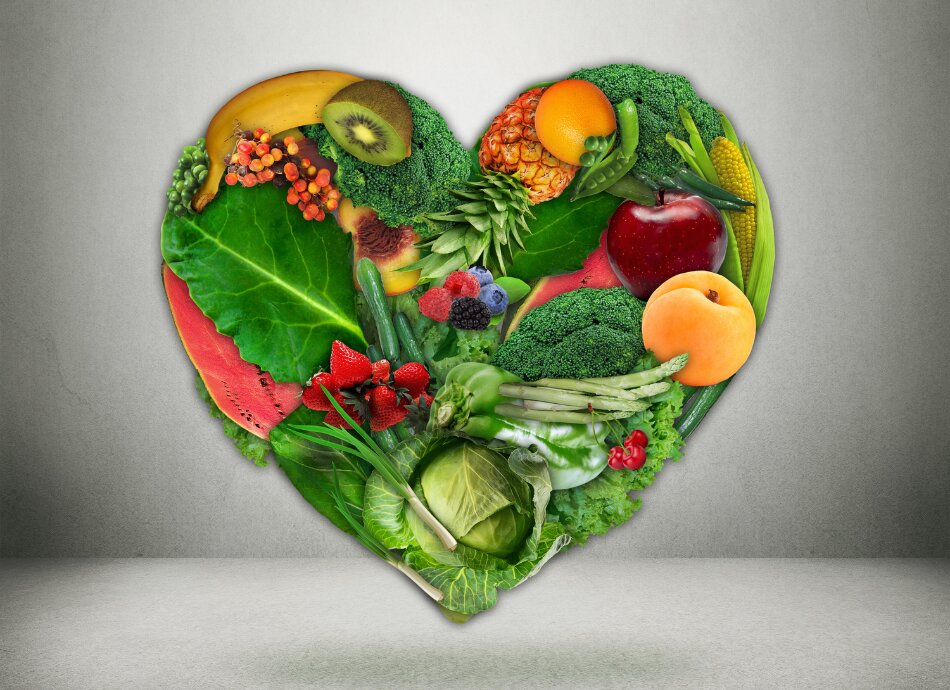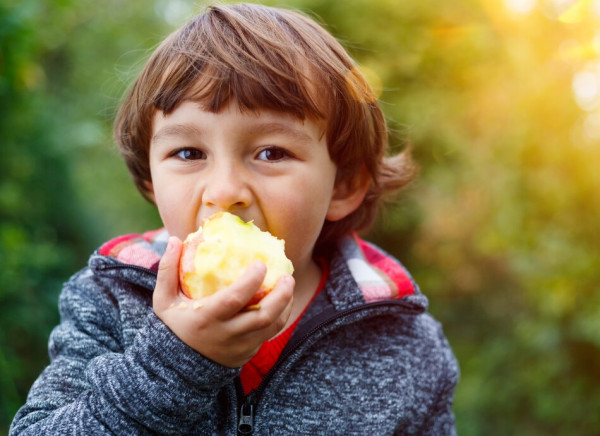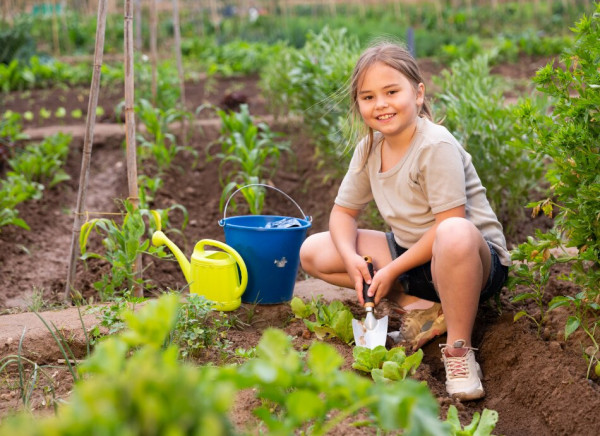Fruit and vegetables
Key points about fruit and vegetables
- Fruit and vegetables are an important part of a healthy diet. They're a good source of fibre, vitamins and minerals.
- Fruit and vegetables should make up over 1/3 of your diet.
- The daily recommended amount depends on your age and factors such as whether you are breastfeeding.
- If you're not eating enough fruit and vegetables, make small changes over time to add more into your day to day eating.

Fruit and vegetables are an important part of a healthy diet. They are a good source of fibre, vitamins and minerals. Nutrients from fruit and vegetables help with growth, immunity and digestion and reduce the risk of being overweight and developing some long-term conditions. A healthy intake of fruit and vegetables helps to protect against major illnesses, such as heart disease and cancer. It's important to eat a wide range of coloured fruits and veggies.
Fruit and vegetables are packed with lots of goodness including fibre, vitamins, minerals, folate, iron, vitamin c, and potassium. Eating at least 2 servings of fruit each day is a great way to improve your health and wellbeing. Even in winter, there is plenty of seasonal fruit and vegetables to choose from for great immunity support(external link).
It's great to eat with the seasons and it can also cost less. Find out what's available at this time of year(external link) on the 5+ a day website.
Read more detailed fruit and vegetable nutritional information.(external link)
Health New Zealand | Te Whatu Ora updated its Eating and Activity guidelines(external link) in 2020.
The recommended amount of fruit and vegetables per day depends on your age. Using serving sizes makes it easier to work out how much you need. The amount which fits into the palm of your hand is a handy measure of a serving size and these amounts should be spread throughout the day.
Daily serving sizes for different ages
- 1–2 years: 2+ servings of vegetables and 1/2 serving of fruit.
- 2–3 years: 2+ servings of vegetables and 1 serving of fruit.
- 4–8 years: 4+ servings of vegetables and 1½ servings of fruit.
- 9–11 years: At least 5+ servings of vegetables and 2 servings of fruit.
- 12–18 years: At least 5½ servings of vegetables for boys and 5 servings for girls, and at least 2 servings of fruit for both.
- Adult men (19–50 years): 6 servings of vegetables and 2 servings of fruit.
- Adult men (51–70 years): 5½ servings of vegetables and 2 servings of fruit.
- Adult men (70+): 5 servings of vegetables and 2 servings of fruit.
- Adult women (19-70+): 5 servings of vegetables and 2 servings of fruit.
- Pregnant women: 5 servings of vegetables and 2 servings of fruit.
- Breastfeeding women: 7½ servings of vegetables and 2 servings of fruit.
Source: Health New Zealand | Te Whatu Ora

Image credit: Canva
Serving size examples for adults
- 1 serving of vegetables is about 75 grams or:
- 1/2 cup of cooked vegetables
- 1/2 cup of canned vegetables
- 1 cup leafy or raw salad vegetables
- 1/2 medium potato or similar sized kūmara, yam, taro, cassava.
- 1 serving of fruit is about 150 grams or:
- 1 medium apple, banana, orange or pear
- 2 small apricots, kiwifruit or plums
- 1 cup diced or canned fruit (drained with no sugar added)
- 1 cup frozen fruit, eg, mango, berries.
Fruit and vegetables can be a major part of every meal. One of the best ways to encourage children who might be reluctant to try new food is to grow fruit and veggies at home. You don't need a lot of space either – a few pots on the windowsill or on the back doorstep can produce yummy results eg, strawberries, cherry tomatoes and salad greens don't take up much room.
You can also eat lots of fruit and veg yourself. If the kids see what you eat and enjoy, they'll be more likely to try it too. When it comes to smaller children, keep trying. For some food, it might take a few go's before they get a taste for it. But remember, don't force kids to eat things. Sometimes, there are foods we just don't like!
Here are some easy ways to add more fruit and vegetables into your diet:
Breakfast
- Add chopped fresh fruit or canned fruit (in unsweetened juice) to your breakfast cereal. Try chopped banana or grated apple in your porridge. Peaches, berries and kiwifruit when in season add colour and variety.
- Add tomatoes and mushrooms to scrambled or poached eggs.
Lunch
- Use salad fillings to bulk out lunches.
- Use up leftover roast vegetables by adding to a salad for lunch, eg, with some spinach leaves, chopped tomatoes and canned lentils or chickpeas to add some protein.
Snacks
- Keep a bowl of fresh fruit on the bench or kitchen table.
- Cut up carrot sticks and apple slices for snacks on the run.
- Try freezing banana slices or grapes for a yummy summer treat.
- For a quick snack try fruit with yoghurt and a sprinkle of nuts, or celery, cucumber and carrot sticks with hummus.
Dinner
- Steaming or microwaving is better than boiling vegetables as cooking them quickly helps to preserve the vitamins they contain.
- Make vegetables the main event and add your protein and grain foods as a side.
- Soups and stews are a great way to use vegetables that are about to go out of date.
- Hiding vegetables in meals can be a good idea for fussy eaters! Add grated or finely chopped vegetables to dishes like bolognaise sauce, meatballs or meatloaf.
Cut down on food waste
No-one likes throwing away food – especially when you’ve got a meal planned or if you're on a budget. Try these tips for keeping your fruit and vegetables fresh.
- Keep carrots fresh in the fridge by placing them in a container with a wet paper towel.
- Don’t store apples, bananas, pears and potatoes with each other or with other fruit and vegetables. They can speed up the ripening process.
- Store ripe fruit in the fridge or freezer.
- If celery goes limp, cut off the bottom and place it in water for a few hours.
- Store salad leaves in an airtight container.
- Chop onions, broccoli, cauliflower and spring onions and store in the freezer until you’re ready to use them.
- Wrap damp towels around the base of asparagus or soft herbs (like coriander, parsley and mint) and store upright in a glass of water.
- Store potatoes in a cool and dark place and keep them separate from onions.
- Store leftover cut fruit or vegetables in a beeswax wrap or a container.
- Try growing fruit and vegetables at home. If you are limited for space, try growing them in pots. That way you can harvest them fresh when you need them.

Image credit: Canva
Read more about eating well for less.
Fruit and vegetable facts(external link) 5+ A Day Foundation
How to get 5+ a day every day(external link) 5+ A Day Foundation
Vegetables and fruit NZ (food groups)(external link) Nutrition Foundation, NZ
25 easy ways to get more fruit(external link) NZ Fruit and Vegetable Alliance
25 easy ways to get more vegetables(external link) NZ Fruit and Vegetable Alliance
Ministry of Health guidelines(external link) 5+ A Day, NZ
Apps
Nutrition apps
Nutrition apps – children
Resources
Healthy Heart Visual Food Guide Poster(external link) Heart Foundation, NZ
Food portions(external link) Heart Foundation, NZ
Choose a balance of healthy food every day poster [JPG, 82 KB] Ministry of Health and Health Promotion Agency, NZ, 2020
References
- Eating and activity guidelines for adults(external link) Ministry of Health, NZ, 2020
- Eating and activity guidelines for babies and toddlers(external link) Ministry of Health, NZ, 2021
- How to make fruit and vegetables last longer(external link) Food to Love, NZ
Credits: Healthify editorial team. Healthify is brought to you by Health Navigator Charitable Trust.
Last reviewed:
Page last updated:





